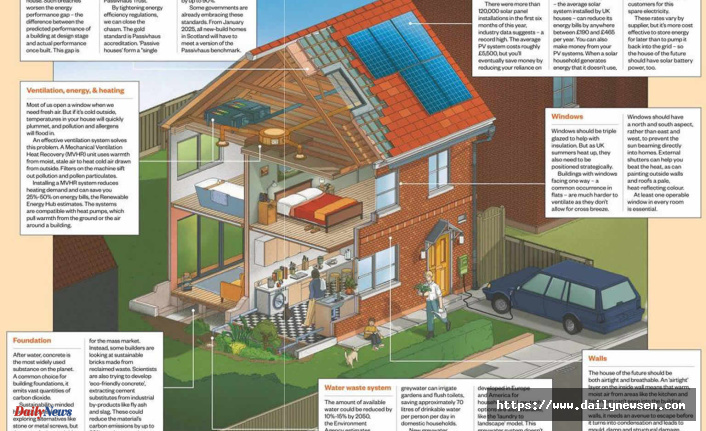As energy costs rise and environmental concerns escalate, homeowners across the globe are increasingly looking to generate their own electricity. But with diverse technologies and ever-evolving landscapes, the question of "what's the best way?" often leaves even the most informed feeling overwhelmed. This article delves into the most popular methods, addressing your burning questions and unveiling the path to powering your home with greater independence and sustainability.
What factors should I consider when choosing a home electricity generation system?
Before diving into specifics, understanding your unique needs and circumstances is crucial. Consider these key factors:
- Climate and Location: Sunshine hours, wind speeds, and water availability significantly impact the effectiveness of different technologies.
- Energy Needs: Estimate your average and peak electricity consumption to determine the required system size.
- Budget: Initial investment, ongoing maintenance, and potential savings play a major role in financial feasibility.
- Technical Expertise: Assess your comfort level with installation and maintenance or factor in professional assistance costs.
- Environmental Impact: Prioritize methods contributing to a cleaner future and align with your sustainability goals.
Leading contenders: Weighing the pros and cons of popular options
- Solar Power: The reigning champion, solar panels harness the sun's energy to produce electricity.
Pros:
- Clean and renewable: Generates electricity without harmful emissions.
- Low maintenance: Requires minimal upkeep after installation.
- Government incentives: Many countries offer financial assistance for solar adoption.
- Increased property value: Can boost your home's market value.
Cons:
- High upfront cost: Installing panels requires a significant initial investment.
- Weather dependence: Efficiency reduces on cloudy or rainy days.
- Storage limitations: Excess generated electricity might need grid connection or battery storage (additional cost).
- Wind Power: For homes in windy locations, small wind turbines can be a viable option.
Pros:
- Clean and renewable: Generates electricity using wind energy.
- Quiet operation: Modern turbines often have minimal noise impact.
- Tax credits: Some regions offer tax breaks for wind turbine installations.
Cons:
- Site limitations: Requires unobstructed wind flow, unsuitable for urban areas.
- Permitting: Might require approval from local authorities.
- Maintenance: Regular inspection and cleaning are essential.
- Lower efficiency: Not as consistent as solar in most locations.
- Microhydro Power: If you have a flowing stream or river on your property, consider harnessing its power.
Pros:
- Clean and renewable: Uses moving water to generate electricity.
- Highly reliable: Can be a consistent source of power in suitable locations.
- Long lifespan: Hydro systems can last for decades with proper maintenance.
Cons:
- Significant upfront cost: Installation requires specialized equipment and expertise.
- Limited applicability: Only suitable for properties with flowing water access.
- Environmental impact: May need careful planning to minimize ecological disruptions.
- Permitting: Stringent regulations and permits might be necessary.
- Combined Heat and Power (CHP): This technology produces both electricity and heat, improving overall energy efficiency.
Pros:
- High efficiency: Reduces energy waste by utilizing heat produced during electricity generation.
- Fuel flexibility: Can operate on natural gas, propane, or biomass fuels.
- Reduced emissions: Lower emissions compared to separate heating and power systems.
Cons:
- Higher initial cost: Requires installation of a specialized CHP unit.
- Maintenance needs: Regular servicing is essential for optimal operation.
- Noise concerns: Larger CHP systems may generate noise levels requiring mitigation.
- Battery Storage: While not a direct generation method, batteries can store excess electricity from sources like solar and wind for later use.
Pros:
- Increased self-reliance: Stores power for use during grid outages or peak demand periods.
- Improved efficiency: Reduces reliance on the grid and optimizes solar/wind energy utilization.
- Potential grid support: Some utilities offer programs where homeowners can sell stored electricity back to the grid.
Cons:
- High upfront cost: Batteries, especially large capacity ones, are expensive.
- Limited lifespan: Batteries degrade over time and require replacement.
- Degradation with use: Charging/discharging cycles affect battery life.
Beyond the big players: Emerging technologies on the horizon
- Geothermal Power: Utilizing the Earth's heat, geothermal systems are gaining traction in suitable locations.
- Hydrogen Fuel Cells: Converting hydrogen into electricity, fuel cells offer clean and efficient power generation.
- Ocean Energy: Technologies harnessing wave, tidal, and thermal energy from oceans hold promising potential.
Unveiling Your Power Potential: Tailoring the Choice to Your Needs
With a grasp of the major contenders, it's time to personalize your decision. Here's how to navigate the choices:
1. Match Technology to Location:
- Sunny climates: Prioritize solar panels, considering battery storage for nighttime use.
- Windy areas: Explore micro wind turbines if regulations and site limitations allow.
- Properties with flowing water: Microhydro systems can be a sustainable option.
2. Budgetary Considerations:
- Solar panels: Offer long-term savings but have a high upfront cost. Consider government incentives and potential property value increase.
- Microhydro: Requires significant investment and expertise, suitable for dedicated homeowners.
- Wind turbines: Costs vary depending on size and complexity. Compare efficiency with local wind speeds.
- CHP: Higher initial cost, but potential fuel savings and efficiency gains might offset it.
- Battery storage: Costly but increases self-reliance and optimizes renewable energy use.
3. Technical Expertise and Maintenance:
- Solar panels: Relatively low maintenance once installed.
- Microhydro: Requires regular equipment checks and cleaning, possibly professional assistance.
- Wind turbines: Regular maintenance and cleaning are crucial, especially in harsh weather.
- CHP: Demands regular servicing and expertise for optimal operation.
- Battery storage: Requires monitoring and occasional maintenance.
4. Environmental Impact:
- Solar, wind, microhydro: Clean and renewable, minimizing environmental footprint.
- CHP: Reduces emissions compared to separate heating and power systems, but consider fuel source impact.
- Battery storage: No direct emissions, but battery production and disposal require responsible choices.
5. Future-Proofing Your Choice:
- Scalability: Consider systems that can be expanded as your energy needs evolve.
- Technology advancements: Stay informed about emerging options like geothermal or ocean energy.
- Grid compatibility: Explore programs that allow selling excess power back to the grid.
Remember: This is a complex decision. Research thoroughly, consult experts, and seek professional advice when needed. By carefully considering your unique needs and circumstances, you can unlock the power to generate clean, sustainable electricity for your home and contribute to a brighter future.
Disclaimer: This article provides general information and should not be construed as professional advice. Always consult with qualified professionals before making investment decisions or installing home energy generation systems.
Beyond Technology: Additional Factors to Consider for a Successful Journey
Choosing the right home electricity generation system is just the first step. Several additional aspects deserve your attention to ensure a smooth and successful journey:
1. Financing and Incentives:
- Explore financing options: Loans, leases, and power purchase agreements (PPAs) can help spread the cost.
- Seek government incentives: Many countries offer tax credits, rebates, and grants to encourage renewable energy adoption.
- Compare electricity buy-back programs: Some utilities allow you to sell excess generated electricity back to the grid, offsetting costs.
2. Community and Zoning Regulations:
- Research local regulations: Understand any permits, approvals, or restrictions related to home energy generation systems.
- Engage with your community: Discuss your plans with neighbors and address any potential concerns.
- Consider homeowners' association (HOA) rules: If you live in a community with an HOA, ensure your chosen system complies with its regulations.
3. Installation and Maintenance:
- Select qualified installers: Choose experienced professionals with a good reputation and proper certifications.
- Understand warranty terms: Ensure clear warranties cover equipment, installation, and performance.
- Develop a maintenance plan: Factor in regular cleaning, inspections, and potential component replacements.
4. Optimizing Energy Consumption:
- Reduce demand: Implement energy-saving measures like LED lighting, smart appliances, and efficient insulation.
- Monitor your system: Track your energy generation and consumption to identify optimization opportunities.
- Consider smart home technologies: Integrate your system with smart home devices for automation and better control.
5. Preparing for the Unexpected:
- Plan for outages: Ensure backup power options for essential appliances during grid interruptions.
- Consider insurance: Discuss coverage options with your insurance provider to protect your system against damage.
- Stay informed: Keep yourself updated on technological advancements and regulatory changes in the home energy sector.
Remember: This journey involves more than just technology. By carefully planning, researching, and addressing all aspects, you can empower yourself with clean, reliable, and sustainable home energy generation. Enjoy the journey towards energy independence and a brighter future!
Note: This article is for informational purposes only and does not constitute professional advice. Always consult with qualified professionals for comprehensive guidance tailored to your specific situation.
Powering Your Future Starts Today
Embarking on the path to home electricity generation opens a door to a more sustainable, independent, and empowered future. While the options may seem overwhelming, remember, knowledge is power! By understanding your needs, carefully considering the different technologies, and diligently planning every step, you can make an informed decision that aligns with your budget, environment, and long-term goals.
Embrace the journey. Seek expert advice, engage with your community, and leverage available resources. As you navigate the landscape of home energy generation, remember, this is not just about powering your home – it's about contributing to a brighter future for all. So, take the first step, research, explore, and unlock the power to shape your own sustainable tomorrow.
Remember, the decision doesn't have to be daunting. Start by exploring resources like the Department of Energy's website or connecting with local renewable energy organizations. Every step forward brings you closer to your goal, and every home powered by clean energy contributes to a cleaner, more sustainable future for all.












